

Sewing Yokes - 7 stunning Yoke patterns for your dresses - Sew Guide. “A yoke is a shaped pattern piece which forms part of a garment, usually fitting around the neck and shoulders, or around the hips to provide support for looser parts of the garment, such as a gathered skirt or the body of a shirt” – wikipedia .

I cannot give a better explanation than this to a very important element which adds to the beauty of a garment be it a kid’s dress or a night gown or even at the back of a shirt. To make patterns of yokes we should first draft a front bodice pattern on paper; the most important marking here is the armhole depth – refer the table to mark this. This is a fitting armhole. If you want a more loose fit add 1/2 – 1 inch to it.
Decide on the neckline of your choice. Simple Round yoke On A-B mark point 2 such that E-2 = 3/4 inch; From line G-E mark up 3/4 inch to point 1 on armhole line. Join the two points 1 & 2 in a soft curved line forming the lower line of the round yoke; cut out the yoke and the lower portion separately. Full round yoke. Fashion, Sewing Patterns, Inspiration, Community, and Learning. Your Wardrobe Unlock'd. By Cathy Hay “Using your individual measurements, a pattern is drafted by scratch using the most exacting of standards.
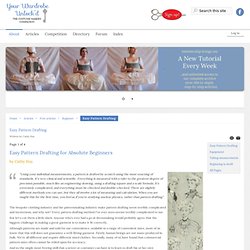
It's very clinical and scientific. Everything is measured with a ruler to the greatest degree of precision possible, much like an engineering drawing, using a drafting square and a scale formula. It's extremely complicated, and everything must be checked and double-checked. There are slightly different methods you can use, but they all involve a lot of measuring and calculation.
The bespoke clothing industry and the patternmaking industry make pattern drafting seem terribly complicated and mysterious, and why not? But let's cut them a little slack. How to dress a straight body type shape rectangle body ruler body. How To Turn Your Dress Ideas Into Reality By Making A Custom Pattern. Jenna!
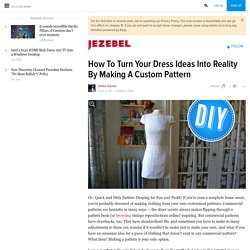
You continue to astound and amaze us with your just do it your own damn self awesomeness! As stated below - this is really pattern draping, but the BEST source I've found for actual flat pattern drafting using slopers (the basic building blocks of every garment pattern piece) is "The Theory of Fashion Design", by Helen Brockman. It's from 1965, and is a super fantastic source of the hows and whys of how the elements of a design work together, and then how that all translates into your drafted pattern pieces. The sample designs are at once classic, kitsch, and insanely informative. Once you set up your first set of personal slopers and start flat pattern drafting, you're pretty much hooked! Flagged Aha. Drafting Your Own PDF Sewing Patterns - An Overview. Hello there!
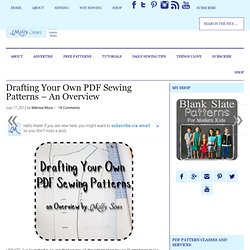
If you are new here, you might want to subscribe via email so you don't miss a post. UPDATE: I’ve launched a course that covers all the information to use Illustrator to make PDF patterns. It’s the course I wish I had been able to find when I was starting; you can find out more about how to make sewing patterns here: Now back to the original post. Twice this week I’ve been asked about how I go about making my patterns, so I thought this post could be an overview with a lot of links to resources for anyone interested in learning more. There are two basic parts to making PDF patterns. I’m self-taught as far as drafting patterns.
Though it’s old (the 1970s photos are fun) it is thorough in explaining how to measure your body and draft slopers, then create patterns from them. Later when I got into blogging, I discovered Ikat Bag. As for digitizing, well that’s another learning curve. OK, that’s all I’ve got for now, short of producing my own tutorial series on how I do what I do. Beginning to draft - Page 4. You will need a piece of paper that is big enough for the whole draft; stick two pieces together if necessary, and then turn the paper over so that the tape is on the back.
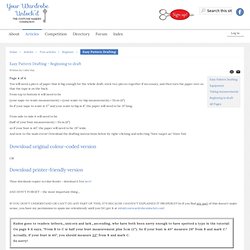
Drafting patterns with Illustrator and printing patterns at home on A4. I have recently started my patternmaking journey.

The reason is that I wanted to create my own pattern fitted to my body instead of buying those ready-made ones and making adjustment. Of course the process is a bit longer the first times because it means you have to make calculations and draw it. But on the other hand it gives me a sense of achievement. Importance of Pattern Making in Garment making. Pattern making technique Pattern making is a highly skilled technique which calls for technical ability, and a sensitivity to interpret a design with a practical understanding of garment construction.
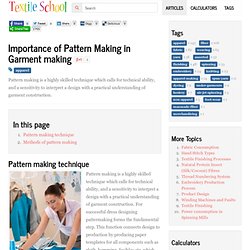
For successful dress designing pattermaking forms the fundamental step. This function connects design to production by producing paper templates for all components such as cloth, hemming, fusibles etc. which have to be cut for completing a specific garment. Essential Measuring Points for Fitting a Pattern - Threads.